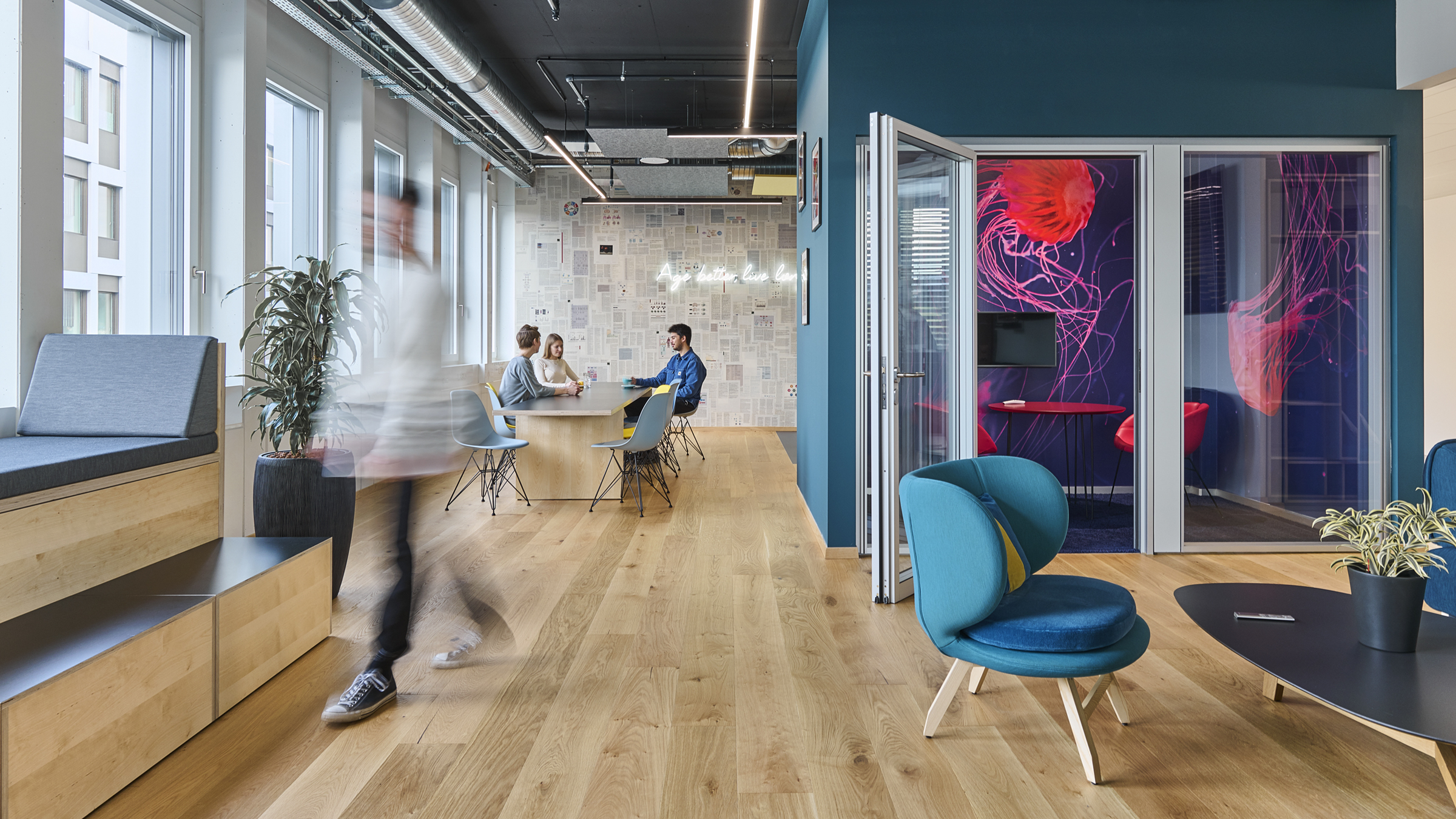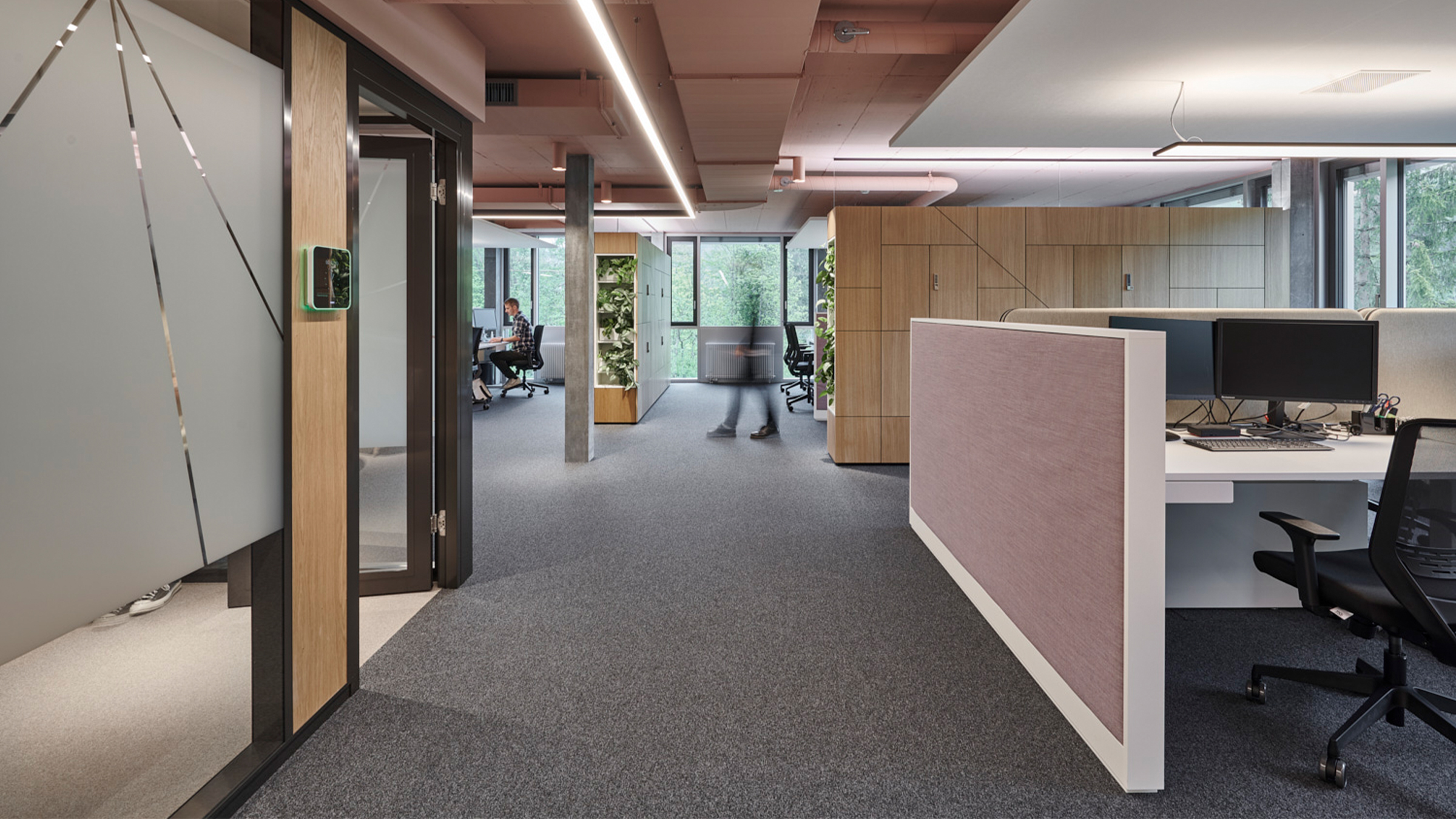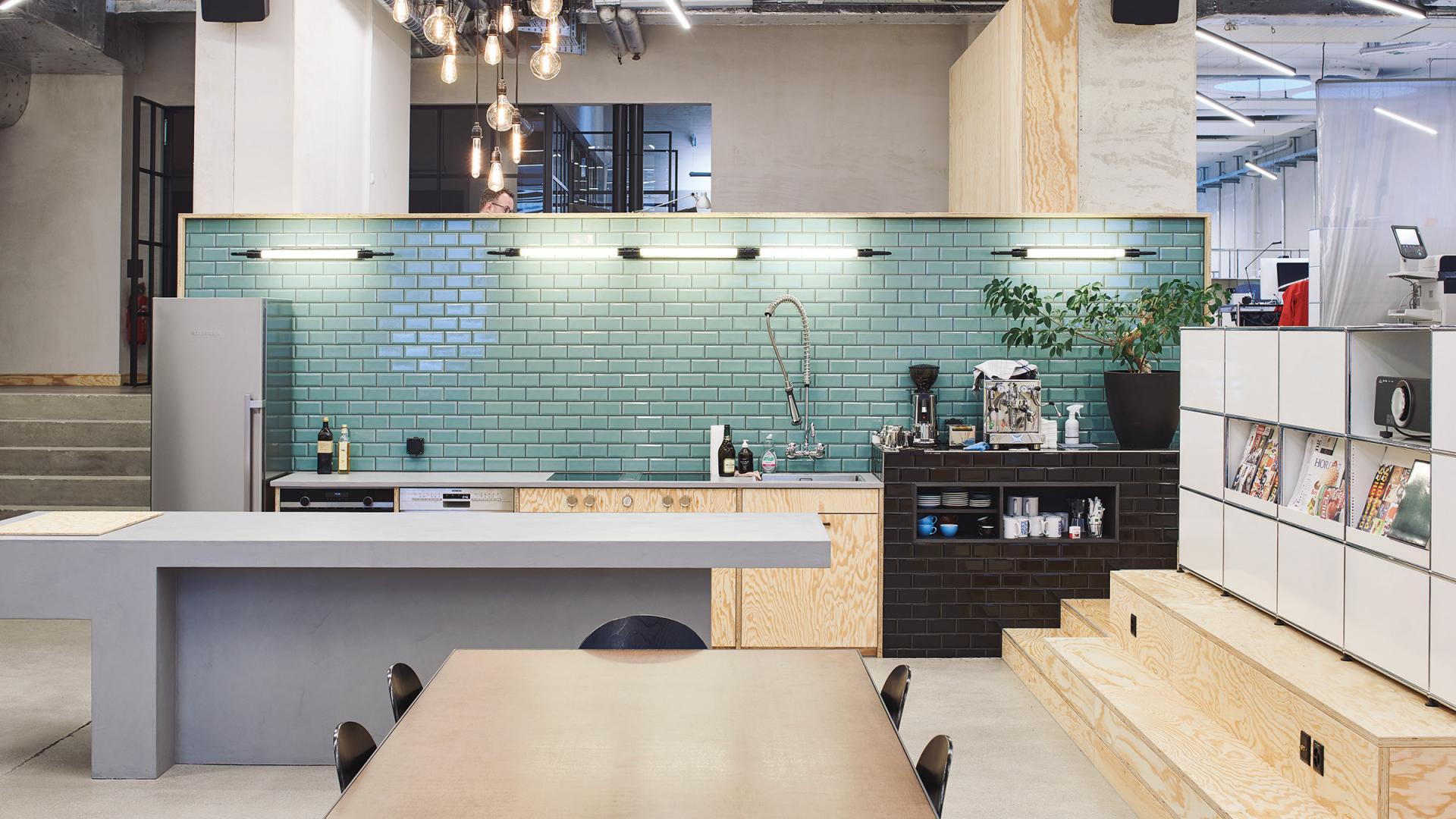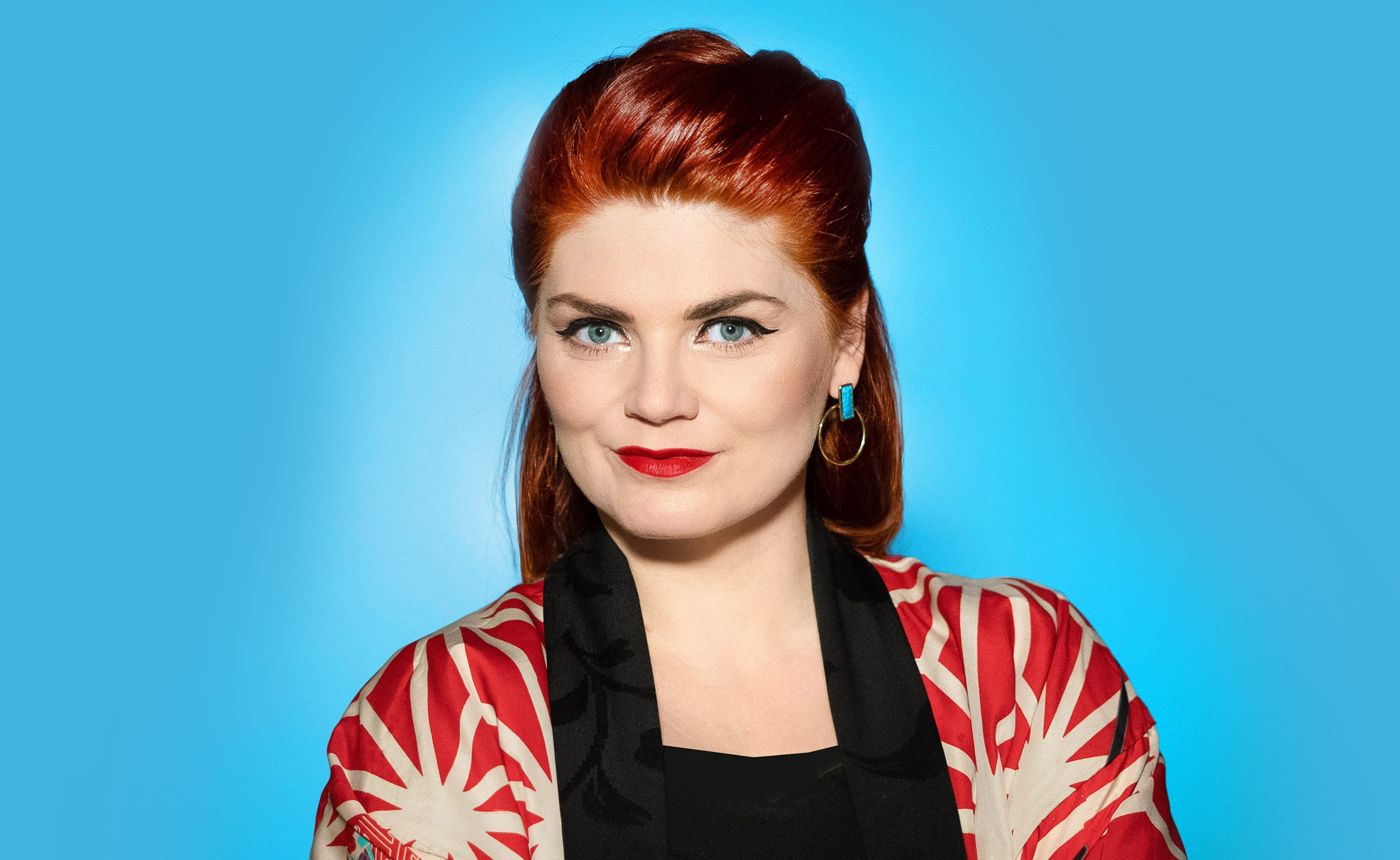by Barbara Mutzbauer, Creative Director Concept and Strategy
Can spaces in companies be crimes? At the Corporate Culture Jam in Biel, questions of corporate culture were discussed, from New Work to the future of leadership. With my closing keynote, I brought up an important but often criminally neglected topic: spaces and atmospheres in companies. It was about nothing less than the future and crimes against humanity. It is good that there is not only a means to fight crime, but even one that increases our quality of life.
Corporate culture would only be an empty shell if it were not shared by a corresponding group of people. Corporate culture and what radiates from it to the outside world is currently one of the most important factors why people choose an employer. We also experience this in our job interviews when we ask: “Why Aroma? The applicant’s desire to belong to us is a good basis and promises joy in the team. Corporate culture should first and foremost have an internal effect, which means quite literally: it should be real.

Rejuveron Life Sciences: An office design that conveys corporate values and promotes culture.
Real corporate culture is lived by the micro-society of a company. It is part of their lives – at least their professional lives – and occupies time they might have spent (elsewhere). Logically, the quality of culture also influences quality of life. We all benefit from a corporate culture if we want to identify with it, work with it and thus also live with it. But what is there to consider?
On the subject of future culture, the 20th century has gifted us with the literary masterpieces “Brave New World” by Aldous Huxley and “1984” by George Orwell. Fiction can teach us a lot. In the superficial utopia “Brave New World”, people live happily and carefree in a beautifully designed culture of pleasure. But the genetically manipulated society is strictly divided into castes. The novel tells of the fundamental need to want to develop and live one’s own personality and of the crime of preventing this dictatorially. Orwell’s book also disregards human needs. His world is described in a directly dystopian way, ugly, uncomfortable and controlled in a totalitarian way. Here, too, the ultimate goal is to break out of the system.
The conclusion of the two very differently described fictions? A culture that is designed past the needs of its people will not work in the long run. Utopias can now also arise when it comes to contemporary corporate culture. These are, for example, well-intentioned visions that cannot be lived out in the light of reality. Or almost dystopian conditions, simply for reasons of lack of mindfulness.
Extremes that are too utopian and dystopian are fortunately not part of the everyday life of our working environments. But we live in technospheres and their physical environment has a great effect on us biological beings. It must therefore be well considered in order to avoid long-term negative effects.
One example is the stress level we experience from noise. Many people feel the need for a quiet workplace. In times of spacious office spaces and shared desks, retreat and concentration are often in short supply and the noise level in particular is repeatedly described in studies as disturbing and even pathogenic.

Vifor Pharma: Acoustic measures reduce the noise level, meeting rooms and focus boxes enable quiet work without distractions.
So good acoustics is already a measure of “crime prevention”. But other aspects of our humanity also need attention. Humans are mostly socially-oriented beings and want to see themselves as members of groups. This group affiliation arises in exchange with each other. An important and not at all trivial moment is that at the coffee machine. I would say coffee machines are the “watering holes of civilisation” – meeting points of social exchange.

Metzger Rottmann Bürge MRB: The kitchen as a central design element, because the cooking and coffee culture are an integral part of the corporate DNA.
If the disadvantage of office spaces in the age of New Work is that they do not offer workplaces that can be occupied individually, then there needs to be an advantage that outweighs this. So why not create communal areas and attractively designed coffee bars that correspond to our social nature and give exchange (resonance) space where it should and may be. People are equally biophilic, they love the living. Office greening is the answer, which can also have a very simple effect.

Haworth Schweiz: Plenty of greenery in the open office space increases well-being and air quality.
Most living beings, including us, are heliotropic, i.e. sunny. Therefore, attention must be paid to the working light and the room lighting. Everything does not have to be uniformly illuminated à la the “more helps more” method. On the contrary: light thrives on shadows and the eye loves contrast. A lot of positive results can be achieved with a few well-considered design interventions.
The ethnologist Kurt Ranke and the communication theorist Walter Fisher coined the term Homo Narrans, the storytelling human being. The writer Nancy Huston also speaks of us as a storytelling species. Storytelling is far more than an effective marketing ploy. It is the ability to explain the world and oneself through stories, which is also being researched more and more in neuroscience. This raises the question for a company: What does Homo Narrans tell himself in his working environment and about his corporate culture? Identity is the key word.
The corporate identity should be perceptible in the rooms, because rooms are the settings and stages for people’s stories. Without words, rooms can store a wealth of information that we humans interpret intuitively and in real time. When we enter a room, we often know in a fraction of a second where we are, what it is for and which people are acting here. Without explanation and CI manual, we sense this. By the way, if we do not assess where we are, we experience irritation, which usually does not feel good. But people will always try to feel good, because as already shown, disregarding human needs does not work in the long run. This is precisely the reason why we have to respond to people’s emotional world. Corporate culture expert Christian Bach rightly speaks of the role of leaders who influence employees through their behaviour and emotional state: “Every leader is a weather maker and a climate commissioner”. Leadership as mood management? Absolutely. But I must add here that weather and climate are emblematically related to the geological and topological context of the landscape. The physical environment sets the conditions for what can emerge in it. The nature of landscapes in turn has a great influence on weather systems. This is just as true in natural landscapes as it is in companies.
The role of atmosphere cannot be overestimated. The atmosphere of a room, or, to use the philosopher Gernot Böhme’s term – the “floating in-between” between space (object) and people (subject) – is the totality of information on factual and emotional components. In short, atmosphere is about design and what it does to people. As shown, physical space can be controlled to meet human needs.
So crime can be prevented and high quality design is a key to this. Yes, if a certain lever is applied, even more can be achieved: the increase in quality of life described at the beginning in the form of time spent in the company. This lever is as intrinsically given to us as the ability to interpret atmospheres. It is empathy. This does not mean pity, but the professionally developed design method of taking the right measures by empathising with the needs of the corresponding group of people. It is obvious that these measures should now transport the identity of the company. What should precede the design, development and realisation is clarity about the corporate culture, which should ultimately be felt in the atmospheres. As those responsible for corporate culture, let’s not create dystopian omissions or too beautifully formulated visions. We need places where the respective culture can really be lived. At this point, I would like to use the word “-topia” for the sake of the message, so to speak, and say: Let’s create places of culture, let’s create cul-topias!

Dr Barbara Mutzbauer is Creative Director Concept and Strategy. She stages messages in and with spaces and develops emotional and multi-sensual experiences. She studied interior design and ethnology, among other things, and did her doctorate in cultural studies on the philosophical-aesthetic topic: “The function of blurriness – atmospheric communication in the world exhibition”.
Get in touch or take a look at other reference projects by Aroma Architecture here.
We use cookies on this site to enhance your user experience. By clicking any link on this page you are giving your consent for us to set cookies.